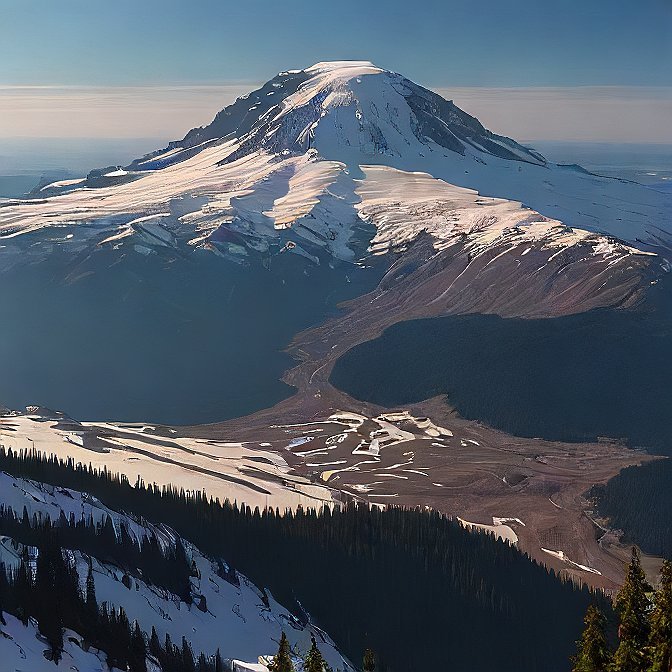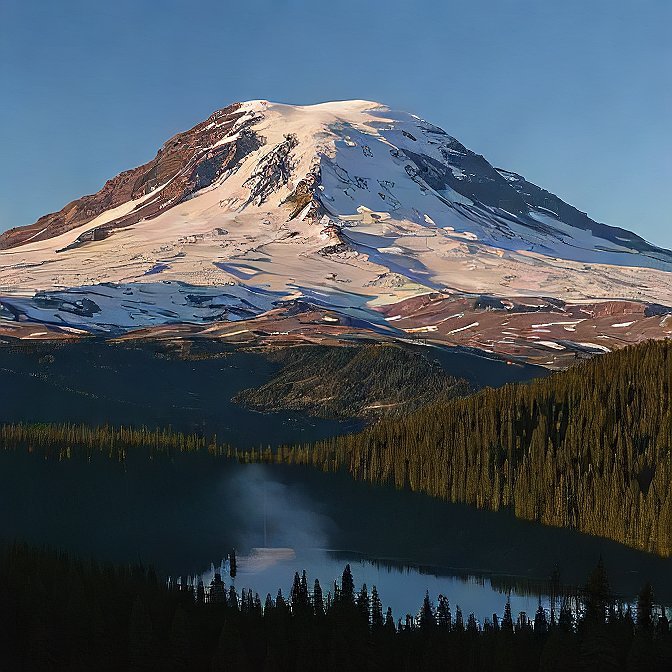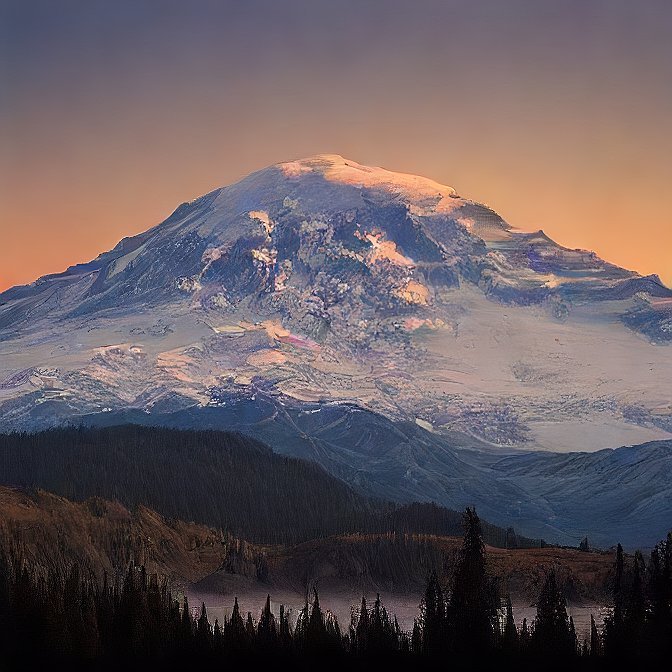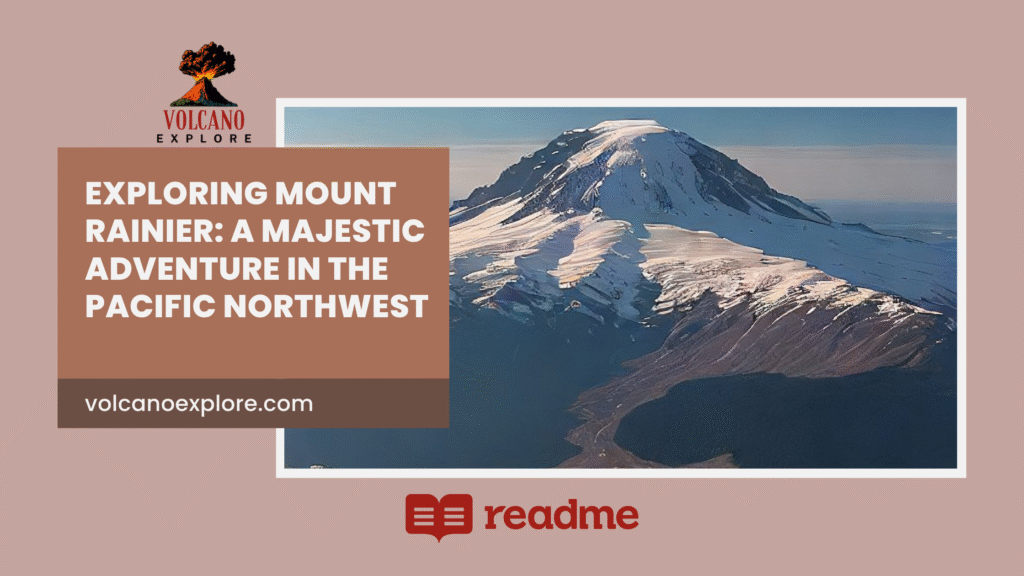Table of Contents
Introduction

Mount Rainier stands among the most magnificent and revered mountains in the United States within the Washington state territory. The Pacific Northwest honors this peak as its tallest mountain since it reaches a height of 14,411 feet in the Cascade Range. Mount Rainier welcomes global visitors because it displays a snow-topped crest along with beautiful meadows and spectacular glacial features as it remains an active volcano. The majestic Mount Rainier should be on the itinerary of any hiker or mountaineering enthusiast as well as those who treasure gorgeous landscapes.
What Makes Mount Rainier Special?
Mount Rainier obtains its charm from its remarkable looks and leads regional national parks visitors. Mount Rainier exists as an active stratovolcano through which many historic years have produced alternating lava and ash deposition layers. The Pacific Northwest region benefits from its height which enables inhabitants up to Seattle to view Mount Rainier whenever they gaze towards the north. Standing at the top of Mount Rainier showcases its long-lasting strength because it has endured numerous volcanic explosions to become a renowned symbol for millions of people.
Mount Rainier preserves several diverse ecological bands consisting of dim forest regions combined with high mountain pastures. In 1899 the Mount Rainier National Park received national park status after succeeding in preserving 236,000 acres of land which protected various rare plant and wildlife species. The natural landscape of the park showcases timeless old-growth forests as well as peaceful glacial lakes along with beautiful waterfalls which form its remarkable natural elegance.
Photographers along with people who appreciate nature and outdoor exploration make Mount Rainier their perfect destination because the scenery transforms throughout different seasons.
Ascenders consider the summit of Mount Rainier one of their most demanding climbing objectives. Professional mountaineers achieve peak summit success yet numerous climbers from different nations try to scale this mountain because of its intimidating path. Mountaineers consider this challenging destination because it presents menacing hazards such as crevasses with glaciers in addition to steep ice slopes.
Curious for more? Dive into our other exciting blogs!
How to Reach Mount Rainier: Your Gateway to Adventure
The easiest way to reach Mount Rainier begins at Seattle-Tacoma International Airport as it sits 60 miles west of the park. Seattle provides different transportation alternatives which enable visitors to reach the park after their flight arrival. Motorists who travel from Seattle to reach the Nisqually Entrance and White River Entrance of the park typically spend two to three hours on the journey considering both traffic congestion and weather elements.
The summer season enables visitors to reach the park through maintained highways although travelers during winter need specialized vehicles with chains as additional equipment on higher elevation roads. Multiple shuttle operators and private excursion companies organize transportation routes from Seattle to Mount Rainier National Park.
Visitors who want to explore Mount Rainier choose Ashford and Enumclaw as their bases because these close towns provide various choices from simple cabins to complete hotel services. Tourists find Ashford beneficial because it sits close to the park entry gates while providing various hiking trails and recreational attractions adjacent to it.
You need to decide between the season and experience type before booking your visit. Pacific Northwest visitors should expect rain during spring and fall months but they can enjoy ideal hiking conditions in summer to witness peak wildflower blooming.
Must-See Attractions Around Mount Rainier
Each attraction within the Mount Rainier National Park brings a different perspective to discover the mountain while exploring its natural environment. The park displays unmatched beauty through its stunning vistas combined with peaceful lakes.
The park destination known as Paradise attracts numerous visitors because it allows visitors to see the snow-topped Mount Rainier peak. Visitors should not miss visiting Paradise during summer months since its elevated position of 5,400 feet creates an epic wildflower Wonderland in the meadows. Guests can access the Henry M. Jackson Visitor Center for additional park information within this area at this location.
The highest elevation that visitors can reach using their vehicles within Mount Rainier National Park is Sunrise at 6,400 feet above sea level. Mount Rainier displays its breathtaking snowy slopes in their full glory during morning sunrise at Sunrise which earned its name because of this special vantage point. Several hiking paths throughout this area let visitors admire breathtaking views of both the mountain summit and glaciers.
Visitors can also explore various glacial lakes throughout the park but Reflection Lakes serve as the prime location for picture-taking. From its mirror-smooth surface Reflection Lakes shows Mount Rainier in a highly detailed representation of its imposing height. The accessible Christine Falls and Narada Falls provide visitors with splendid photographic opportunities due to their stunning beauty.
People seeking more wilderness immersion can find their desired experience by exploring the park’s remote and isolated backcountry areas. The hidden portions need additional effort yet provide quiet spaces and aficionados will find peace and solitude here. Hikers can discover various natural ecosystems across Mount Rainier through the Wonderland Trail which runs completely around the mountain as it follows rainforests and alpine meadows.
Outdoor Activities and Adventures on Mount Rainier

The magnificent Mount Rainier area provides numerous outdoor possibilities that accommodate different skill levels of thrill-seekers. Mount Rainier presents outdoor experiences for hikers and climbers and winter adventurers who have different preferences.
Visitors who enjoy walking will find multiple hiking paths at the park that differ in their difficulty level. Users can walk the challenging to moderate Skyline Trail to experience lush meadows while enjoying excellent mountain sights. Climbers who tackle the Wonderland Trail will experience 93 miles of strenuous travel surrounding Mount Rainier as they bear witness to spectacular views of alpine lakes and glacial landscapes and flowing waterfalls.
Many mountaineers throughout the world choose Mount Rainier as their primary climbing destination. The summit quest needs advanced planning together with trained expertise and purpose-built equipment. Experienced climbers find the ascent to Mount Rainier demanding because of its glaciers alongside crevasses and snow-covered slopes. People who wish to ascend the summit can join guided climbs while summit permits are required before participation.
Mount Rainier presents visitors with an entirely new set of snow-filled outdoor adventures when the season changes to winter. Winter recreation includes snowshoeing and cross-country skiing since specific explored routes and trails exist for winter activities. Ski enthusiasts can choose between Alpine skiing and snowboarding because the park operates Crystal Mountain Ski Resort at its northeastern mountain base.
The Best Time to Visit Mount Rainier
The selection of activities will help you decide on the best season to encounter Mount Rainier. The summer months between July and September provide the ideal situation to visit Mount Rainier since abundant trails clear of snow together with reliable weather patterns make hiking and climbing and watching wildflowers possible. The peak visitor period at Mount Rainier focuses on the months between mid-July and August because these months present spectacular wildflower blooms that make every meadow bloom bright with colors.
Skiing and snowshoeing as well as snowboarding are available exclusively during the winter period of December through March. The park experiences powerful snow accumulations at this period which supports all winter recreation activities. The elevated areas remain cold during winters therefore check local forecasts before setting out.
Safety Tips for Exploring Mount Rainier
Those visiting Mount Rainier should treat safety as their top concern when they venture through the mountainous landscape. You need to plan ahead because higher elevation weather changes quickly during all seasons even when summer arrives therefore bring protection against freezing temperatures as well as rain and snow. People who visit Mount Rainier should wear multiple clothing layers together with large quantities of drinking water and essential items such as sunscreen, maps, and first aid equipment.
Always keep to designated hikes and follow established park rules while out on trails. Some distant trails in the park demand that visitors understand their ability to handle the terrain. A Mount Rainier summit attempt demands both difficult technical skills and plenty of strength from climbers. To tackle Mount Rainier climbers must obtain guided climbs and permits together with complete understanding of the dangerous aspects of high-altitude mountaineering.
Why Mount Rainier Should Be on Your Travel Bucket List

Mount Rainier presents itself as something greater than mountain territory because it enables people to blend thrilling explorations with natural wonders alongside peaceful moments. Travelers find everything they need at this national park thanks to its summit peak and distant vistas that let them hike climb photograph or simply relax. Every visitor to Mount Rainier finds different adventures whether they hike alpine meadows or ski snowy slopes because the mountain offers unforgettable experiences throughout its path.
Visitors exploring the Pacific Northwest should place Mount Rainier at the top of their destination list because it showcases all three elements of natural beauty wildlife and outdoor adventure. Every visitor experiences a profound admiration for this natural wonder because of its everlasting appeal as well as its dramatic landscapes and multiple recreational opportunities.
Conclusion
The natural glory and uncontrollable force of nature find their apex in Mount Rainier. The mountain serves as a path that guides people into exploring the raw nature of the Pacific Northwest region which starts at its towering summit edge then extends through its alpine meadows and down to its cascading waterfalls. Mount Rainier welcomes both experienced climbers and nature enthusiasts who want peace in outdoor settings. Put your equipment together now because you are heading towards an experience that you’ll never forget at this Earth’s extraordinary location.
For more info about volcanoes: Click Here.
FAQs
What is the best time of year to visit Mount Rainier?
Summer seasons between July through September provide the most suitable period for hiking, wildflower observation and mountain climbing in Mount Rainier National Park. From December through March you should visit for snow sports activities which include skiing and snowshoeing.
Do I need a permit to hike Mount Rainier?
Visitors need permits to engage in backcountry camping and to summit the mountain. Permit information for your visit to the park can be found on the park website so visitors should confirm this information beforehand.
Is it safe to hike Mount Rainier?
Hiking Mount Rainier can be secure for everyone who follows designated paths while monitoring the weather forecasts and packing appropriate gear for fluctuating conditions. Hikers should follow their skill level and maintain respect for park regulations.





